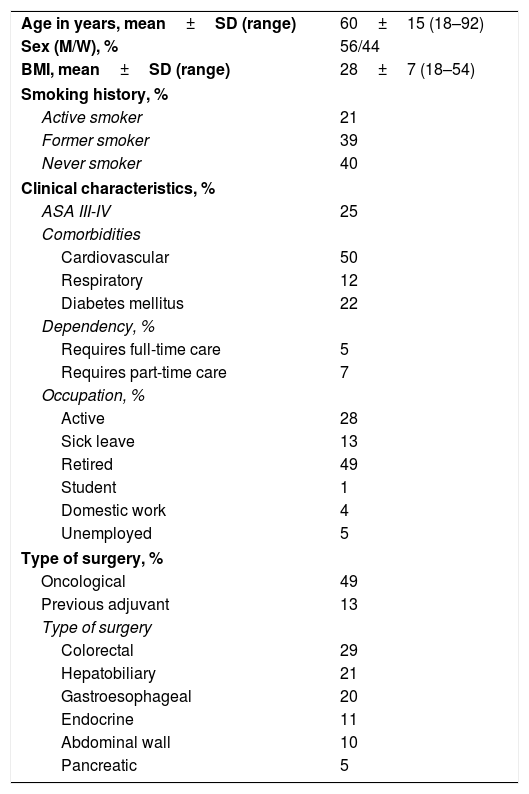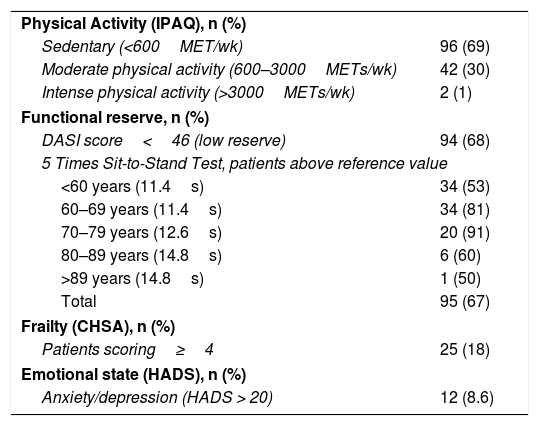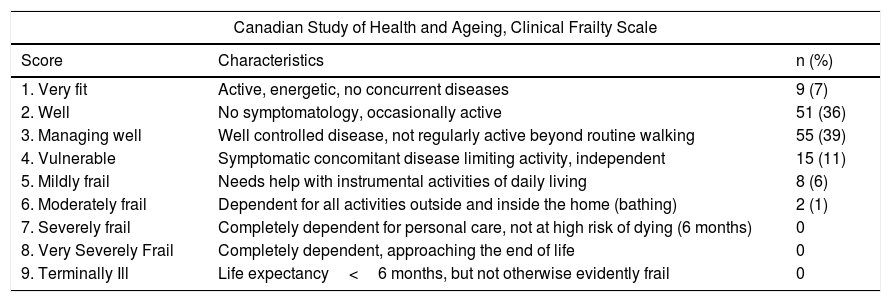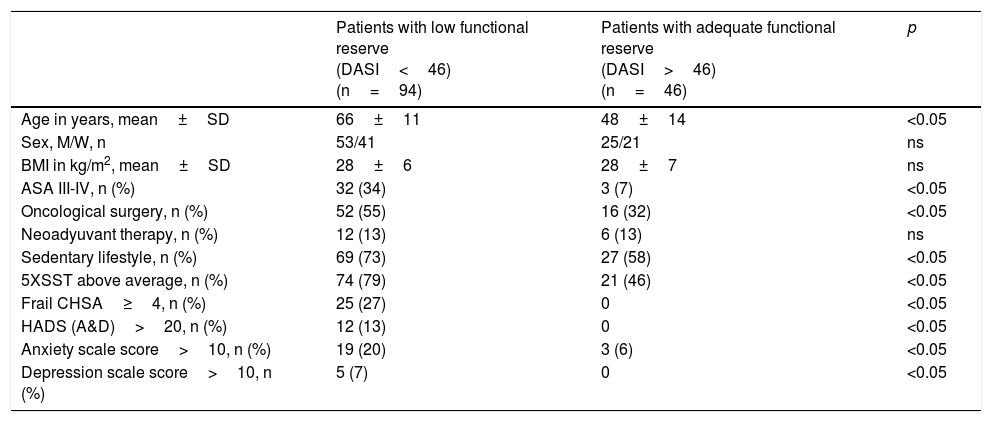Frailty and low physical activity and cardiorespiratory reserve are related to higher perioperative morbimortality. The crucial step in improving the prognosis is to implement specific measures to optimise these aspects. It is critical to know the magnitude of the problem in order to implement preoperative optimisation programmes.
ObjectiveTo characterise surgical population in a university hospital.
MethodsAll patients undergoing preoperative evaluation for abdominal surgery with admission were prospectively included during a 3-month period. Level of physical activity, functional capacity, frailty and emotional state were assessed using score tests. Additionally, physical condition was evaluated using 5 Times Sit-to-Stand Test. Demographic, clinical and surgical data were collected.
ResultsOne hundred and forty patients were included (60±15yr-old, 56% male, 25% ASA III or IV). Forty-nine percent of patients were proposed for oncologic surgery and 13% of which had received neoadjuvant treatment. Seventy percent of patients presented a low functional capacity and were sedentary. Eighteen percent of patients were considered frail and more than 50% completed the 5 Times Sit-to-Stand Test at a higher time than the reference values adjusted to age and sex. Advanced age, ASA III/IV, sedentarism, frailty and a high level of anxiety and depression were related to a lower functional capacity.
ConclusionsThe surgical population of our area has a low functional reserve and a high index of sedentary lifestyle and frailty, predictors of postoperative morbidity. It is mandatory to implement preoperative measures to identify population at risk and prehabilitation programmes, considered highly promising preventive interventions towards improving surgical outcome.
Una baja reserva cardiorrespiratoria, un bajo nivel de actividad física y la fragilidad se relacionan con una mayor morbimortalidad perioperatoria. Implementar medidas para optimizar estos aspectos es clave para mejorar el pronóstico. Es fundamental conocer la magnitud del problema para dimensionar los programas de optimización preoperatoria.
ObjetivoCaracterizar la población quirúrgica de un hospital universitario de nivel terciario.
MétodosSe incluyeron prospectivamente todos los pacientes sometidos a evaluación preoperatoria para cirugía digestiva con ingreso durante 3 meses. Se evaluó el nivel de actividad física, la capacidad funcional, la fragilidad y el estado emocional, y se realizó un test de medición del estado físico (5 Times Sit-to-Stand Test). Se recogieron datos demográficos, clínicos y relacionados con la cirugía.
ResultadosSe incluyeron 140 pacientes (60±15 años, 56% varones, 25% ASA III o IV). El 49% estaban propuestos para cirugía oncológica y un 13% había recibido neoadyuvancia. El 70% de los pacientes presentaban una capacidad funcional reducida y eran sedentarios. Un 18% fueron considerados frágiles y más de un 50% completaron el 5 Times Sit-to-Stand Test en un tiempo superior a los valores de referencia. La edad avanzada, el ASA III/IV, el sedentarismo, la fragilidad y un nivel de ansiedad/depresión elevado se relacionaron con una menor capacidad funcional.
ConclusionesLa población quirúrgica de nuestro entorno tiene una baja reserva funcional y un elevado índice de sedentarismo y fragilidad, factores asociados a un peor pronóstico quirúrgico. Urge implementar medidas preoperatorias para identificar la población de riesgo y programas de prehabilitación considerados estrategias de optimización preoperatoria con gran potencial.











